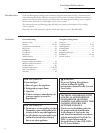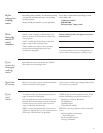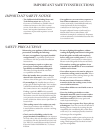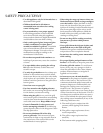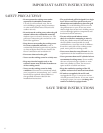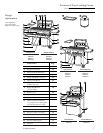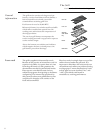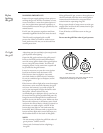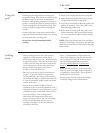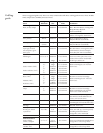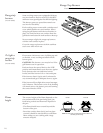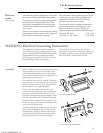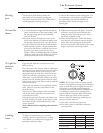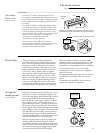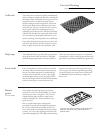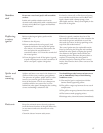Special offers from our partners!

Find Replacement BBQ Parts for 20,308 Models. Repair your BBQ today.

The Grill
Stainless Steel Outdoor Cooking Center
10
Using the
grill
Grilling requires high heat for searing and
proper browning. Most foods are cooked at the
HI heat setting for the entire cooking time.
However, when grilling large pieces of meat or
poultry, it may be necessary to turn the heat to
a lower setting after the initial browning. This
cooks the food through without burning the
outside.
Foods cooked for a long time or basted with a
sugary marinade may need a lower heat setting
near the end of the cooking time.
Do not leave the grill unattended while
cooking.
1. Check to be certain the drip tray is in place.
2. Light the grill using the instructions in the
To light the grill section of this guide.
3. Turn the control knob to HI and preheat the
grill for 15 minutes. The roll top lid is to be
closed during preheating.
4. Place the food on the grill and cook to the
desired doneness. The control knob may be
set to any position to adjust the heat setting
if necessary.
NOTE: The hot grill sears the food, sealing in
the juices. The longer you preheat the grill, the
faster the meat browns and the darker the grill
marks will be.
Grilling
hints
• When turning the meat over, always use a
spatula as it will not puncture the meat
allowing the juices to run out. This will help to
keep the meat juicy. Turn the meat only once,
as juices are lost when the meat is repeatedly
turned. Season or salt the meat after it has
been cooked; these procedures have a
tendency to dry the meat out.
• Be sure to trim any excess fat from meat or
poultry. To prevent steaks or chops from
curling while they are being cooked, slit the
fat around the edges at about 2-inch intervals.
To test for doneness, make a small cut in the
center of the meat.
• The doneness of meat is affected by the
thickness of the cut. It is impossible to cook a
thin piece of meat to a rare doneness. A steak
should be at least 1-inch thick to have it turn
out rare and juicy. The cooking time is
affected by the temperature of the meat
when you start to cook it, the size and shape
of the cut and the kind of meat you are
cooking. The degree of doneness desired
also affects the time.
• The U. S. Department of Agriculture says,
“Rare beef is popular, but you should know
that cooking it to only 140°F. means some
food poisoning organisms may survive.”
(Source: Safe Food Book. Your Kitchen
Guide. USDA Rev. June 1985.)
• When defrosting meats it is recommended
that it be done overnight in the refrigerator
as opposed to a microwave. This in general
yields a juicier cut of meat.
• Always ensure that the meat is thoroughly
cooked by using a meat thermometer.



